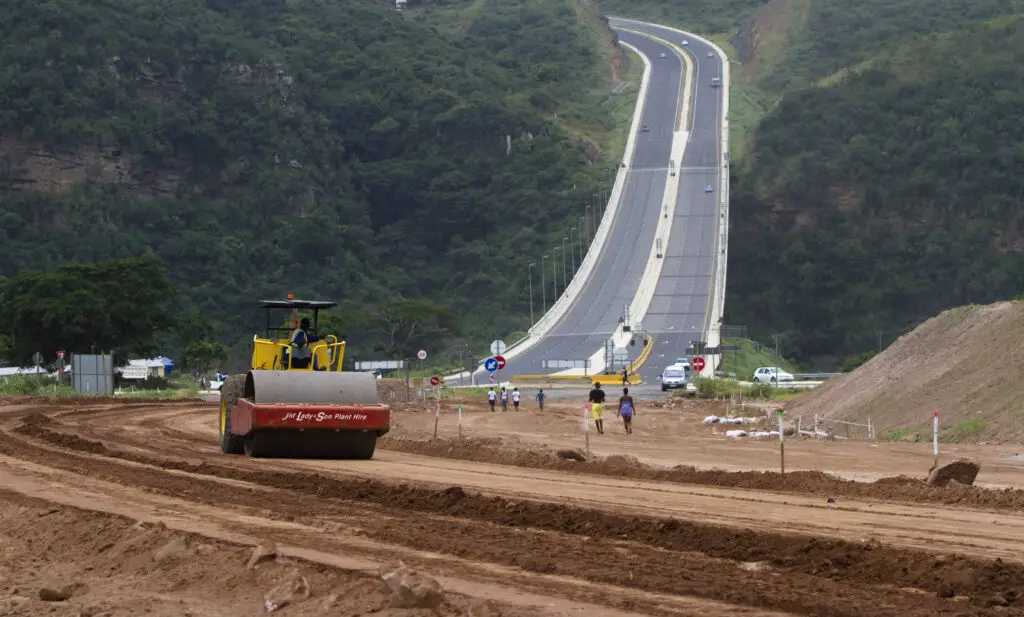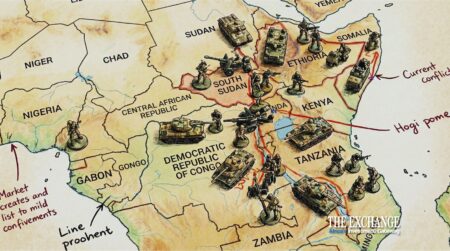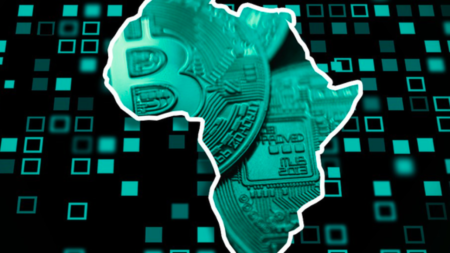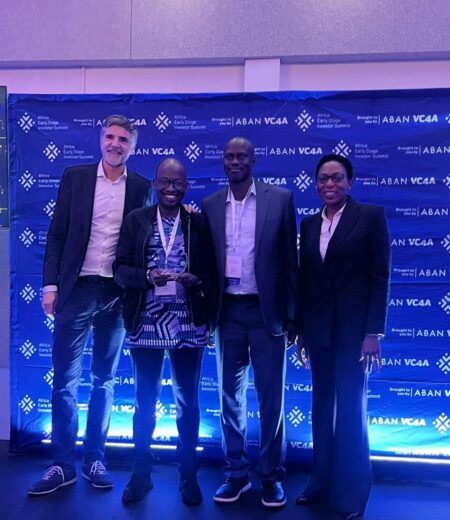- Population growth and economic development have necessitated speeding up and scaling up infrastructure development in Africa.
- Africa has an enormous infrastructure deficit that hinders access to basic services and limits economic growth.
- Fulfilling the demands of a billion more Africans requires increased access to adequate infrastructure.
Population growth and economic development have necessitated speeding up and scaling up infrastructure development in Africa. Over 28 African nations have seen population growth of more than double in the last 30 years. The population of 26 other African countries will quadruple over the next 30 years. Consequently, funding for the continent’s infrastructure has become essential.
Furthermore, port and rail infrastructure are required to carry goods across markets and support Africa’s economic progress due to the rising demand for mineral and natural resource exports. For instance, to keep up with the continent’s economic development, the electricity demand will rise by 93 per cent by 2035, and 47 per cent of roads will need paving. Ports must increase the average container handling efficiency from 20 to 25-30 moves per hour, and 300 million more people must have access to the Internet.
According to the African Development Bank, infrastructure expenditures have historically been responsible for more than half of the continent’s economic growth, productivity gains, human development advancements, and poverty declines. Investments in infrastructure are still required for Africa to maintain its development. According to the World Bank, Africa’s weak infrastructure limits economic development by 2 per cent annually and reduces productivity by as much as 40 per cent.
To upgrade Africa’s physical infrastructure, including transportation (roads, trains, ports, and airports), water, energy, and telecommunications, it is crucial to analyse the existing situation and map out potential future directions.
Read more: A spotlight on Africa’s port industry and its challenges
Infrastructure deficit in Africa
Africa has an enormous infrastructure deficit. In terms of water and electricity, the continent has significant regional disparities. Approximately 45 per cent of the population in sub-Saharan Africa has access to electricity, and 60 per cent has access to water. This means that around 600 million individuals lack access to electricity. According to the AfDB, the electricity shortage is more pronounced in rural areas, where coverage is approximately 28 per cent, compared to 65 per cent in urban areas.
Although access to water has improved recently, a significant disparity still exists across urban and rural areas, with more than 90 per cent of urban residents having access to clean water compared to only 67 per cent of rural residents. Unsurprisingly, countries with a higher per capita income in sub-Saharan Africa have greater access to safe water and electricity. Inadequate sanitation and water supply cost Africa’s economies about 5 per cent of its GDP annually.
While transport infrastructure varies widely from country to country, its toll roads, railway lines, and ports are generally dilapidated and poorly maintained. Infrastructure Consortium for Africa contends that the low quality of roads, rail, and port infrastructure in Africa raises intra-African trade costs by 30 to 40 per cent.
Less than half of the rural population can access roads, with less than 47 per cent of the roads in Africa paved. This hinders the rural population’s access to essential education, healthcare, and transportation services. Additionally, it restricts their access to economic opportunities. The lack of quality road networks also causes safety issues, with over 200,000 road accidents occurring annually and making up approximately one-fifth of global road accident fatalities.
Existing infrastructure outdated and ineffective

Ports are no exception. Inadequately equipped and managed ports experience delays in shipment handling, lengthy processing times, and high handling costs. According to the AfDB, African ports are 50 per cent more expensive than those in other regions globally. The lack of integrated road and rail systems connecting terminals presents additional difficulties.
For instance, cargo ships from one of Africa’s largest economies, Nigeria, spend up to a month at sea before offloading in Lagos. Thus, the Nigerian government has partnered with Singapore-based Tolaram, Nigeria’s largest food company, state-owned China Harbour Engineering, and French logistics giant CMA CGM to construct a $1.2 billion, a state-of-the-art deep-sea port that will have to double the capacity of existing ports and eliminate maritime congestion. These investments will help Nigeria combat inflation, economic stagnation, and a decline in foreign investment.
Surprisingly, the infrastructure of information and communication technology has expanded significantly. According to the AfDB, Africa is the world’s second-largest and fastest-growing mobile phone market, with approximately eight out of ten Africans possessing a mobile phone.
However, less than one-third of the population currently has access to broadband internet. Africa has 21 of the world’s least-connected nations African. This is unsurprising because only about 11 per cent of households have computers. Unfortunately, this digital divide has significantly affected the economically disadvantaged population.
Read more: Tanzania road infrastructure fueling development opportunities
How much is Africa’s infrastructure gap worth
According to the African Development Bank, Africa needs up to $170 billion annually by 2025 to revamp its infrastructure, with two-thirds required for brand-new infrastructure and one-third for maintenance.
According to the World Bank, attaining universal Internet access across Africa will require $100 billion in infrastructure investments, such as 4G stations and at least 250,000 kilometres of fibre to establish and maintain broadband networks.
There are ongoing initiatives related to the African digital economy, such as the EU-AU Digital4Development Centre, which aims to establish universal digital access in Africa by 2030. Five African nations have begun implementing the initiative: Mozambique, Burkina Faso, Uganda, Tunisia, and Morocco.
Addressing Africa’s infrastructure gap
Increasing debt-to-GDP ratios remains one of Africa’s infrastructure development’s most significant challenges. This constrains future government expenditures on infrastructure development. In 2020, Sub-Saharan Africa had a debt-to-GDP ratio above 50 per cent. Eritrea, Cabo Verde, Mozambique, Angola, Mauritius, Zambia, the Republic of Congo, and Ghana have the highest debt-to-GDP ratios. Thus, funding poses a significant challenge for infrastructure development in Africa, with government budgets constrained.
Local banks and financial institutions cannot fully fund the necessary infrastructure projects, necessitating diversifying financing sources for public-private partnerships (PPPs). South Africa, Morocco, Nigeria, Egypt, and Ghana accounted for more than fifty per cent of all successful PPP activity between 2008 and 2018. Several other nations have multiple PPPs in progress. Burkina Faso and Botswana have 20.
Fortunately, funding opportunities seem imminent. Investors from the United States, China, the United Kingdom, and the United Arab Emirates, including government agencies, private pension funds, and investment firms, have demonstrated a significant interest in African infrastructure projects.
According to estimates, these investors manage as much as $550 billion in assets. According to the Infrastructure Consortium of Africa (ICA), China’s investments in Africa grew by 10 per cent per year on average from 2013 to 2017. For instance, as part of China’s Belt and Road initiative, China’s EXIM Bank financed over 90 per cent of Kenya’s Mombasa-Nairobi Standard Gauge Railway.
In addition, China’s Belt and Road Initiative will fund Africa’s ports, roads, and other infrastructure. China has become and will continue to be Africa’s largest spender. According to the Washington-based Centre for Global Development, Chinese development banks contributed $23 billion to African infrastructure between 2007 and 2020, compared to $9.1 billion from all other development banks.
Obstacles to infrastructure development in Africa
Unfortunately, structural issues present additional obstacles to infrastructure development in Africa. While more than $2.5 billion in infrastructure projects are expected to be completed by 2025, most fail to materialise. McKinsey’s research on multiple infrastructure projects in Africa showed that the completion rate for infrastructure projects remains low owing to numerous factors at the initial phases of project development, such as a limited pipeline of deals or selection of low-impact projects, weak feasibility studies and business plans; delays in obtaining licenses, approvals, and permits; inability to agree on risk allocations; failure to secure offtake agreements a; and inability to agree on risk allocations.
The study determined that only 10 per cent of infrastructure projects are effectively completed, with more than 80 per cent failing to survive the feasibility and planning stage and only 50 per cent of those projects reaching financial closure.
How Africa can move forward
African governments must act to increase project viability by focusing on mitigating political, currency, and regulatory risks. For example, the governments of Senegal and Zambia, supported by the International Finance Corporation (IFC), agreed to manage risks and issues related to land, currency, and politics for their solar energy projects. As a result, Zambia’s and Senegal’s projects for the construction of solar power plants received over 20 bids from international investors.
Infrastructure development in Africa remains a catalyst for economic progress. Fulfilling the demands of a billion more Africans requires increased access to adequate infrastructure. The critical challenge for the continent is to ensure its growing population has access to reliable services like electricity, water, Internet, and efficient transportation systems.
Ensuring adequate funding for infrastructure is another critical step. This will require African governments to demonstrate long-term policy stability and the institutional capacity to guarantee investors that projects will achieve completion. In doing so, Africa will ensure sustainable economic growth through intra-African and international trade and increase the well-being of its burgeoning population through access to primary services.











